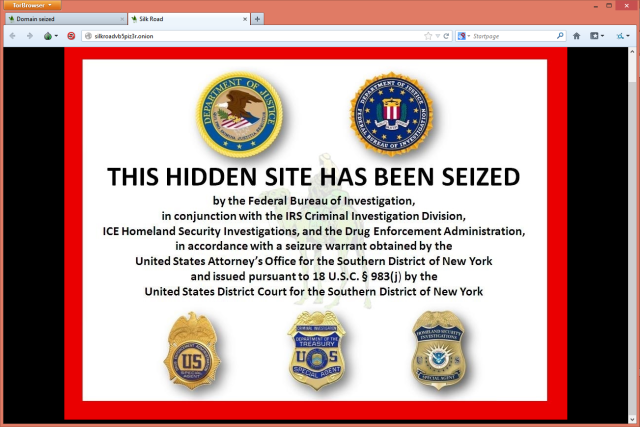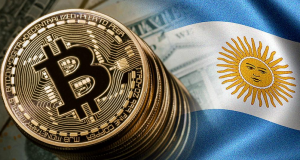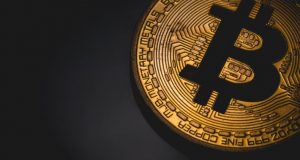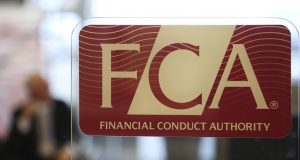
The infamous Dread Pirate Roberts, head of the "most sophisticated and extensive criminal marketplace on the Internet today," (Tarbell, see link below) has finally been identified and arrested by the Federal Bureau of Investigation. This is huge news for the Bitcoin community. This multimillion dollar black market, known as the Silk Road, has been operating since early 2011, and according to the official police warrant for his arrest, Dread Pirate Roberts, known legally as Ross William Ulbricht, has collected over 600,000 BTC in commissions over the past few years.
This means that the SR formed a fairly large chunk of the whole Bitcoin economy. While many Bitcoin users are not proud of this fact, it could easily impact the future of the cryptocurrency. In fact, just hours after the Silk Road website was replaced by the official looking statement pictured below, the exchange rate dropped by almost 1/3. It has since rebounded but remains slightly unstable.
It really should come as no surprise at all that the FBI has been searching for this guy for nearly two years. The warrant states that investigators began looking into the Silk Road only 10 months after it was founded and have since made, "over 100 individual undercover purchases of controlled substances from Silk Road vendors." While it would be easy to wonder how a service as sophisticated as the Silk Road could allow false deals like this to occur, I think it should have been completely expected.
Most Silk Road vendors probably knew or at least highly suspected what was going on. The market was never meant to be an inaccessible secret. It was only meant to remain hidden. Any average user, even a teenager, would have had little trouble searching the web for a few tutorials explaining how to access and use the Silk Road. If drug addict could do it, the FBI, with their vast pool of resources, almost certainly could.
But the service was meant to be hidden. The vendors of the illegal goods and services offered on the Silk Road used complex shipping methods to remain anonymous. In addition, with the help of a cryptographic network known as Tor, the police were never supposed to be able to find out where the Silk Road server was located and they really were stumped for some time. How did they finally find this digital drug lord and what does this mean for the future of Bitcoin?
The following is summarized from the 33-page warrant for Ulbricht's arrest, issued by Christopher Tarbell on September 27, 2013.
Ulbricht was charged on three counts. The first, "Narcotics Trafficking Conspiracy," states that he conspired to violate the narcotics laws of the U.S. by aiding in the distribution of controlled substances via the internet. The second, "Computer Hacking Conspiracy," is a similar charge for distributing hacking software and services. The third, "Money Laundering Conspiracy," states Ulbricht's unlawful financial practices and interference with interstate commerce.
In describing these charges, Tarbell uses broad terms, (i.e., "Ulbricht... and others, known and unknown,") which suggests that the FBI may intend to charge others significantly involved in the Silk Road. Tarbell also states that the charges are made based on his five years of experience as a Special Agent, his training, and of course the investigation and the evidence.
The warrant proceeds to explain how Ulbricht protected his enterprise with Tor. We are repeatedly reminded of reasons that Ulbricht must have known that what he was doing was illegal. Tarbell also explains why it is clear that Dread Pirate Roberts was really the one calling the shots at the Silk Road. He made important decisions like determining what could and could not be sold on the site and he ran the show when the website needed updated or fixed.
Several pages of the warrant are devoted to describing how Tor works, the basics of Bitcoin and how it was used on the Silk Road, as well as what the market's website looked like. Several product categories, titles, and ads are quoted, and there are even some screenshots attached to the end of the document. Quite a few Silk Road statistics are mentioned as well, including the number of communications through the private messaging system (1.2 million), the number of buyer accounts registered (over 140,000), user location data (30% from the U.S., 27% undeclared, and many more from other countries), the site's total revenue (over $1.2 billion at current exchange rates), and more.
The warrant gives a fairly detailed history of Dread Pirate Roberts himself, beginning with his first ever forum post, at which point his alias was simply "Silk Road." Tarbell lists a number of Dread Pirate Roberts' announcements, including his selection of a new name, details about Bitcoin withdrawal issues, a new URL for the Silk Road, a site outage, a new commission policy, new product categories, and a new feature called "Stealth Mode." The warrant also revealed information about Dread Pirate Roberts' interaction with his administrators, his payments to them, and even their private messages thanking him.
One section of the warrant that probably surprised many people, including Silk Road users, was the information about Ulbricht's attempt to hire someone to kill a user that was threatening to reveal the personal information, including addresses, of thousands of Silk Road users. This blackmailer, known as FriendlyChemist, claimed to have hacked a major vendor's computer and promised to keep quiet for half a million dollars. He also claimed that he needed that money to pay off a debt to his drug supplier, not just for blackmail.
Ulbricht, still known as Dread Pirate Roberts, asked to speak directly to the supplier, and a user named redandwhite came forward as that supplier. Dread Pirate Roberts chose to pay redandwhite about $150,000 to murder FriendlyChemist instead of paying the $500,000 blackmail. This all occurred around March of 2013. A photograph of FriendlyChemist's dead body was supposedly sent to Dread Pirate Roberts as confirmation, but the police were never able to discover records of the actual homicide or even a person that matched the name and description in the messages.
The following pages of the warrant discuss how Ulbricht was identified as Dread Pirate Roberts. The first indication was a forum post advertising the Silk Road on shroomery.org. This post was made by a user called "altoid," and led to a similar post, also by a user called "altoid," on bitcointalk.org. These posts were both from January 2011, but several months later Ulbricht used the same Bitcoin Talk forum account to advertise a job offering for an "IT pro" for a "Bitcoin startup company." He left his real email address, [email protected], as a way to contact him. This was Ulbricht's biggest mistake, as it revealed his real name and led to his Google+ account and his LinkedIn account (pictured below).

Investigators discovered more similarities between Ulbricht and Dread Pirate Roberts. For one thing, Ulbricht's favorite videos from his Google+ profile had multiple videos from mises.org, while Dread Pirate Roberts had a link to mises.org in his forum signature. In addition, through subpoenaed Internet records, police discovered that Ulbricht's email account and a server used to manage the Silk Road were both being accessed at the same general time and from the same general location, specifically, Hickory Street in San Francisco, California. An IP address used to access a virtual private network associated with the Silk Road was also tracked to an Internet café nearby.
Another significant piece of evidence was an intercepted package that was supposed to be delivered to Ulbricht's residence in San Francisco. It contained nine fake IDs, all showing Ulbricht's photograph but bearing different names. Police confronted him about the IDs in July of 2013, but he refused to speak much and it appears from the warrant that no criminal charges were brought against him at the time. Months later, after confiscating the Silk Road server, messages to and from Dread Pirate Roberts about counterfeit documents were discovered. They bore dates that roughly corresponded to the interception of the fake IDs.
Lastly, a connection between Ulbricht and the Silk Road was discovered on Stack Overflow, a Q&A forum for programmers. A user named "Ross Ulbricht" asked a question about using PHP with Tor and included a piece of code from the program he was working with. The username for this account was changed to "frosty" less than a minute after the question was posted. Furthermore, the email address associated with the Stack Overflow account was originally [email protected] and was later changed to [email protected], which is completely fake. In addition, some of the code found on the Silk Road server was identical to that posted on Stack Overflow. The very last bit of evidence mentioned was a secure shell connection from a computer/user named "frosty@frosty" to the Silk Road server.
That is the end of the warrant. Tarbell signed it and Ulbricht was arrested at a library in San Francisco on October 1, 2013. But the Bitcoin community still has plenty of questions. How will this affect the value of the Bitcoin? What will happen to the funds left in the Silk Road wallet? Dread Pirate Roberts was supposed to have a fail-safe that would release the funds in an emergency, but that hasn't kicked in yet. Could it still work?
Was Ulbricht really the founder of the black market, or did he have a predecessor as he claimed in an interview with Forbes? Did he have a backup of the full site hidden somewhere that could be restored by his administrators at the appropriate time? These are all hard questions and it will take time for the police and the community to sort everything out. Only time can tell the future, but what do you think?
 You, Me, and BTC Your Liberty & Bitcoin Podcast
You, Me, and BTC Your Liberty & Bitcoin Podcast






